As I turned off the light in my classroom, ready to leave for the summer, my mind filled with thoughts about the school year – students I’ll miss and those who challenged me; projects, writing, books; current events that pulled us together. Finally, my mind jumped to next year. Yep, in May. “But next year I’ll…”
This is what we do, isn’t it, teachers? The classroom door isn’t even closed before our minds run off to what we can improve next year. We’re ready to change, revise, improve, throw things out; sometimes redo it all.
This summer started no different. My mind catalogued a million things I could tweak, add, and subtract to make next year better. This year, however, I made myself stop. Instead of focusing on all the little things I wanted to change (read: that went wrong), I decided to focus on what went right and build on that. It’s like when I help my struggling writers – having them revise all the issues in their writing would be overwhelming. Students would decide it’s too much too tackle and do nothing. If, however, I point out what is done well and get them to build on that, then there is hope, and students are willing to try. Over time, the writing will improve.
What Worked?
So I asked myself, “What went right this year, and how can I enhance that?” Let me tell you, teacher friends, when we take this approach, the joy comes back. We can focus on growing the good, instead of berating ourselves with the should-have’s and could-have’s.
Looking at my class through this lens, I was able to acknowledge that many of our classroom structures worked well: choice reading, Writer’s Notebooks, nonfiction study, personal choice writing. I stopped when I got to book groups. I smiled as I thought about the lively conversations around books and the close connections these groups formed as they talked to each other all year. Although it was a small part of our class (we met sporadically), it was focused, relevant, and genuinely engaging for almost every student.
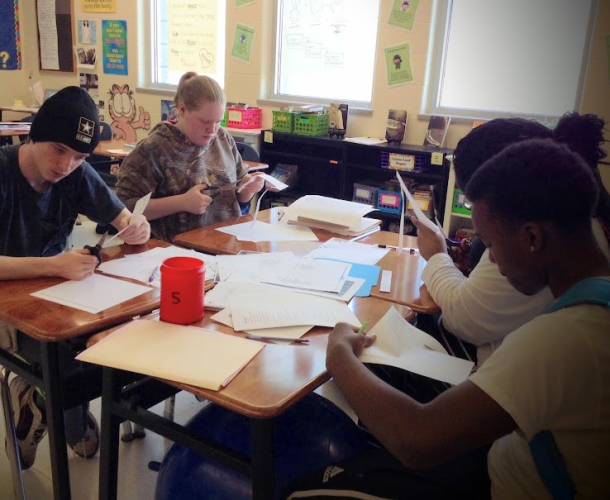 |
 |
What Can I Build On?
Suddenly, the strength I needed to build on hit me: the connections my students had with each other in book groups were so powerful last year. In what ways could I expand those connections into more areas in our classroom, and how could we begin building connections with others beyond our class room?
My first thought was the book groups themselves. Last year we started meeting late in October and only shared about books. This year, the plan is to start much earlier with a variety of purposes. In August and early September, students will meet in different groups – talking about books, articles and poems, photos, videos, current events, and some of their own writing.
When I feel we’re ready, I’ll create their long-term groups. Right now, I’m planning on mid to late September. I want a balance of personalities so that within each group, all members speak, listen and support each other.
While our in-class connections are growing through small group work, I also want to strengthen our class connection to the world, something I didn’t focus on last year. I see two entry points for this:
Last year, independent choice reading was strong in our classroom. Armed with my new Book Love Foundation classroom library, students found books they loved and read a lot. I don’t want to change that, but I do want to work this year to help kids step outside themselves sometimes. This year, I’ll book talk and model the idea of books as mirrors, windows and doors, a concept originated by Rudine Sims Bishop, Professor Emerita of Education at Ohio State University.
Many of my students focused on books as mirrors –they found characters and situations they personally connected with because they saw themselves reflected in the pages. This was great. I’m hoping to expand this by introducing and encouraging my students to also consider window books, so they can see worlds and characters who are completely different from them. I believe window books can help students connect to others because these books allow students to feel what it is like to be someone else. Finally, I want them to consider reading books that might be doors into possible futures. These books offer a glimpse of a life students might like to live, or they offer ways of thinking and acting that students had not previously considered. Window and door books both open us up to others’ experiences, which helps us to have empathy and to see connections that we didn’t know existed.
The other way I’d like to strengthen our connections to the world is through technology. We wrote a lot in our notebooks last year, and we also created several multimedia pieces, but we didn’t share beyond our classroom. This year I want to have students blogging (about books and as a way to share their own writing), so their voices can reach a more authentic audience.
We also used my class Twitter to connect with authors of popular books and to share what we were doing. This year I plan to expand by having students use their Twitter accounts to connect as a class and beyond. I want students to see the power of their own voices in the world. Beyond tweeting socially with friends, I want students to get involved in issues, causes, or organizations they believe in, and to connect with others who have similar interests. I have some models of younger students who Tweet (check out @thelivbits, a young, avid promoter of books and reading) that I plan to share.
It’s early August as I flip the lights back on. The shiny white board and freshly waxed floor hit me as I survey the room. There are books to reshelf, desks to move around, and boxes to unpack. But inside me, peace and confidence simmer under my typical August excitement. Instead of feeling frenzied about all the little things I need to change, I’m choosing to follow a road less traveled, to focus and build on last year’s strengths. I have a plan to build stronger connections in my readers and writers this year. And I hope that will make all the difference.
Booksource Recommendations



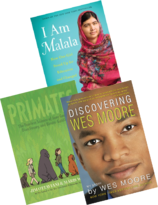
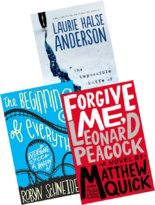
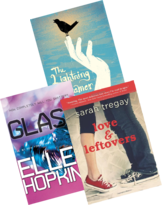

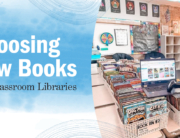

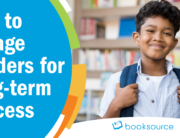
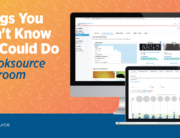
Leave A Comment